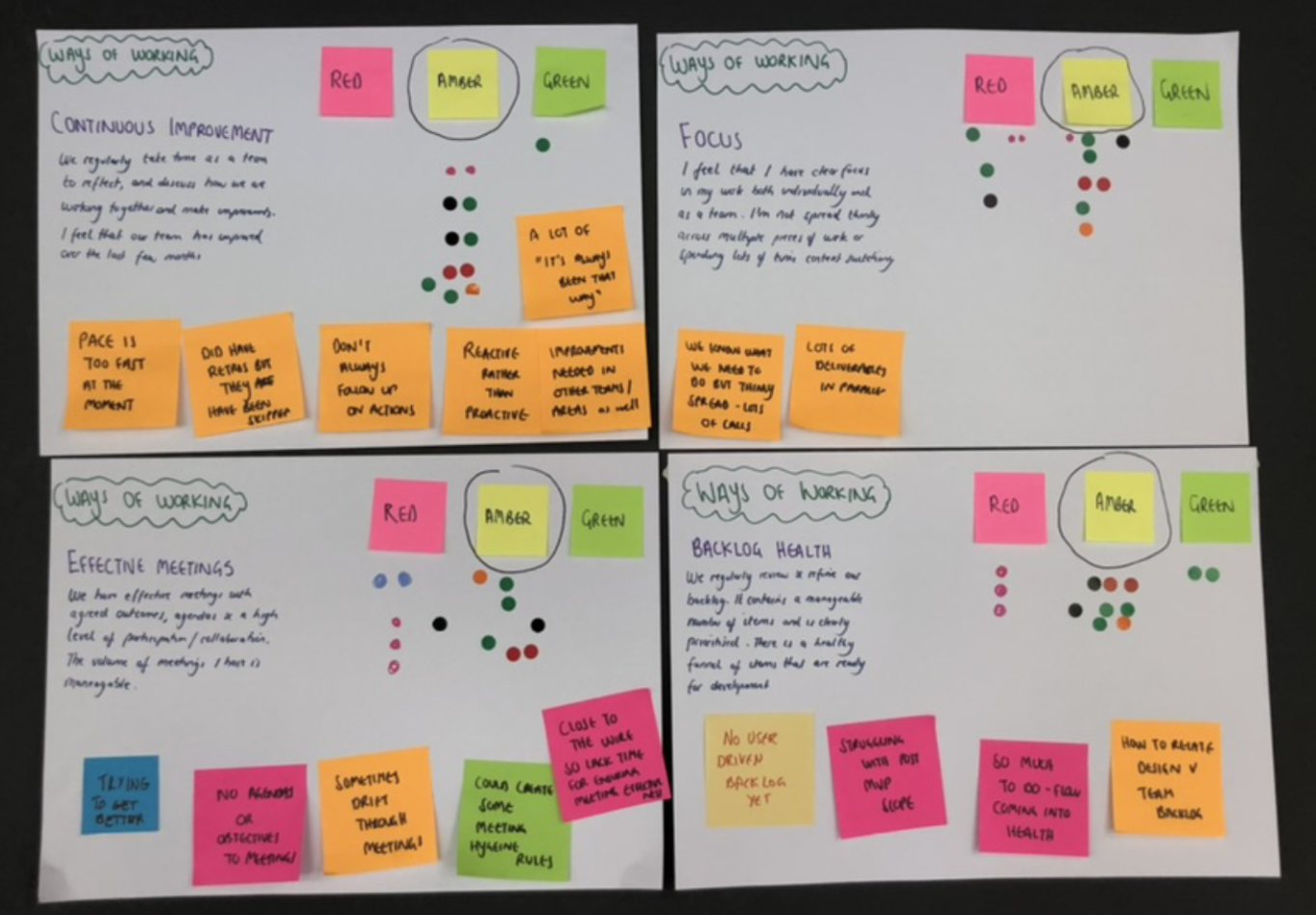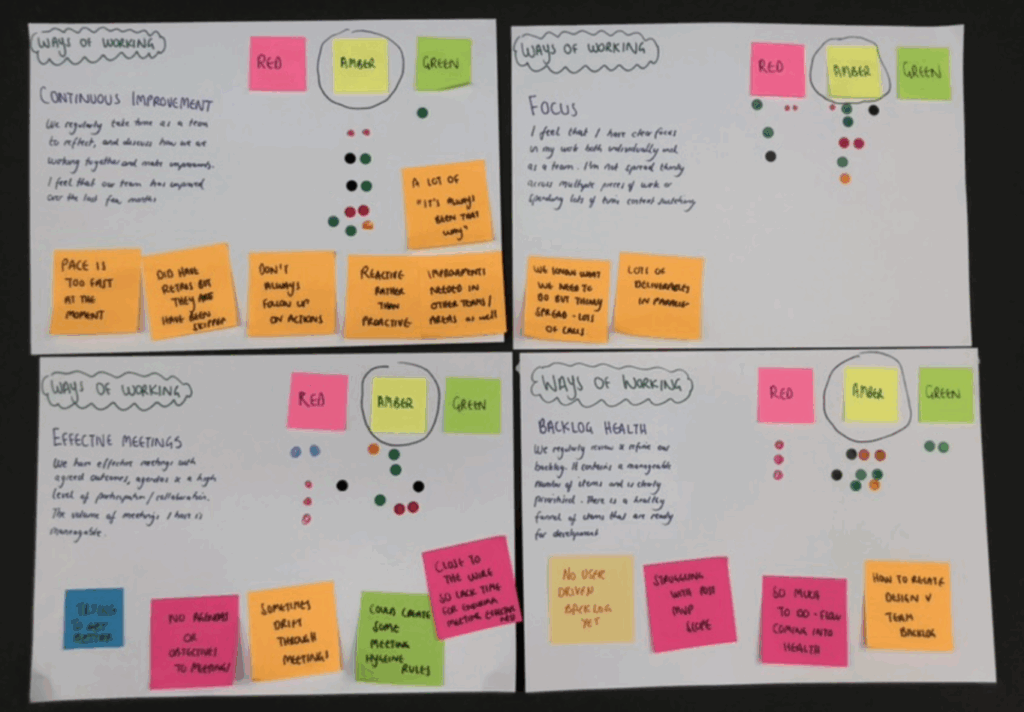
10 Retrospective Formats
To keep your team engaged and help them improve
If you’ve been running retrospectives for a while, you’ll know that using the same format every time can get dull. People lose energy, the conversation gets predictable, and you might experience some long silences. One of the easiest ways to keep retrospectives fresh, engaging, and useful is to mix up the format.
In this post I’ll share 10 retrospective formats. Some are simple, some are creative, and some help you look ahead as well as back. All of them give your team different angles to reflect and learn from.
If you prefer to watch a video about this you can access our free Udemy course on Agile Retrospectives here.
Structuring Your Retrospective
No matter which format you choose, the flow of a good retrospective stays roughly the same. A typical retro has five phases:
- Set the Stage
- Gather Data
- Generate Insights
- Decide What to Do
- Close
The retrospective format you pick will usually guide the first two phases, helping people warm up, share their thoughts, and make sense of what happened. The final phases of grouping, voting and agreeing actions usually stay fairly consistent.
A format is really just a tool to help structure the conversation. Some formats help people share emotions, some draw out facts, some help you look ahead, and some keep things light. Don’t feel limited to one format per session either, you can mix and match. The important part is that you end with one or two clear, realistic actions that help the team to improve.
Retrospective Tools
You don’t need any fancy software to run an effective retrospective. All you really need is:
- Somewhere visible to capture thoughts (whiteboard, window, wall, or an online board like Miro or Mural)
- Sticky notes and sharpies (if you are in person)
- A way to group your ideas
- A simple voting method (dot voting works perfectly)
10 Retrospective Formats
Here are 10 retrospective formats to get you started. I’ve used each of these formats many times and they each have their own benefits, which I’ve explained below.
- 4 Ls (Liked/Loved, Learned, Lacked, Longed For)
- Stop / Start / Continue
- The Sailboat Retro
- Six Thinking Hats
- Lean Coffee Retrospective
- Rose, Bud, Thorn
- Pre-Mortem
- Happiness Radar
- Timeline Retrospective
- Dixit Retro
1 – The 4 Ls (Liked, Learned, Lacked, Longed For)
This format is one of my favourites for its simplicity and balance. It encourages conversations that cover wins, learning, gaps, and future needs.
- Liked/Loved – What lifted us up? What did we enjoy? What went well?
- Learned – What did we learn? This could be learning knowledge or skills or learning from failures.
- Lacked – What was missing?
- Longed For – What do we wish we had?
If you are confused between lacked and longed for I like to explain it as a difference between a bug (lacked) and a new feature (longed for). It’s a great way to help the team reflect holistically rather than focusing only on problems or frustrations.
2 – Stop / Start / Continue
Stop/Start/Continue works well when you want to review ways of working and quickly find opportunities to improve.
- Stop – What’s not working or getting in the way?
- Start – What new behaviours or practices could help us?
- Continue – What’s working well that we should continue doing or build on?

I’ve found that teams enjoy this format because it’s simple, practical, and usually leads to clear, actionable next steps.
3 – The Sailboat Retrospective
The Sailboat helps teams understand both what’s helping them now and what might cause trouble in the near future. The metaphor helps teams articulate the difference between accelerators (wind), impediments (anchors), and worries about the future (icebergs/rocks).
- Wind – What’s pushing us forward? What is helping us to succeed?
- Anchors – What’s slowing us down or dragging us back?
- Icebergs/Rocks – What dangers or risks lie ahead? What are we worrying about?

This format encourages discussions about what may be coming next, and how to proactively reduce risk.
4 – Six Thinking Hats Retrospective
This format is based on Edward De Bono’s six thinking hats. He’s written a whole book on this topic.
It can be used in your team meetings and conversations as well as to structure a retrospective. It’s a powerful format because it forces the team to think in different ways instead of defaulting to the same patterns.
- Red Hat – Feelings, emotions, intuition
- White Hat – Facts, data, information
- Black Hat – Risks, problems, concerns
- Yellow Hat – Positives, benefits, opportunities
- Green Hat – Ideas, creativity, alternatives
- Blue Hat – Process and facilitation
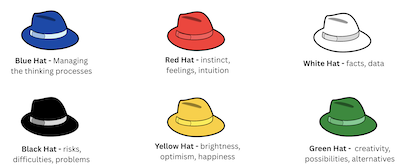
I like to go through each hat during the retrospective, asking all team members to wear the same colour of hat at the same time. I usually use the blue hat throughout as a facilitator and have the team cycle through the other 5 hats in the order above, finishing with the green hat to identify improvement ideas.
5 – Lean Coffee Retro
Lean Coffee is a great format to use when the team has lots of different things on their minds and you want to prioritise and get through a variety of topics in a short amount of time.
- Everyone writes topics for discussion (these could be issues, or things that are going well that the team want to build on)
- The group votes (give everyone 3 votes/dots to vote on the most important things for them to discuss)
- Discuss topics in priority order
- Use a timer to keep flow e.g. 5 minutes per topic
- Use Roman voting when the timer goes off – thumbs up to keep going, thumbs down to move to the next topic, or thumbs sideways to go with the flow.
It creates a focused, self-organising conversation where the team are in control of the agenda.
Read Vinnie’s post about how Lean Coffee can create connections.
6 – Rose, Bud, Thorn
This format encourages optimism and growth by looking at what’s working, what’s challenging, and what has potential. It encourages teams to balance appreciation (Roses), challenges (Thorns), and future opportunities (Buds). It’s simple, visual, and encourages a growth mindset by focusing not only on what went wrong, but also on emerging potential.
- Rose – What went well? What do we appreciate?
- Thorn – What didn’t go well? What is challenging us right now?
- Bud – What has potential? What opportunities do we see?
It’s simple, visual, and great for teams who want to look beyond problems and explore emerging possibilities.
7 – Pre-Mortem
A Pre-Mortem is excellent for planning future work with a realistic, honest mindset. Instead of waiting for things to fail and then reflecting afterwards, you intentionally imagine a failed outcome and work backwards to understand what might cause it.
- Imagine the project has completely failed
- Identify what caused that failure
- Discuss how to prevent or mitigate those causes now
It’s an excellent technique for surfacing assumptions and blind spots early, especially before big releases or complex work. I also find that team members enjoy imagining all the things that went wrong!
8 – Team Radar Retrospective
This format gives you a snapshot of team morale across multiple dimensions such as collaboration, tools, workload, pace and communication.
Team members rate each category on a simple scale (e.g., 1–5), add comments, and compare the results. Over time you can spot trends, dips, and improvements. It’s brilliant for teams focusing on culture, health, and long-term performance.
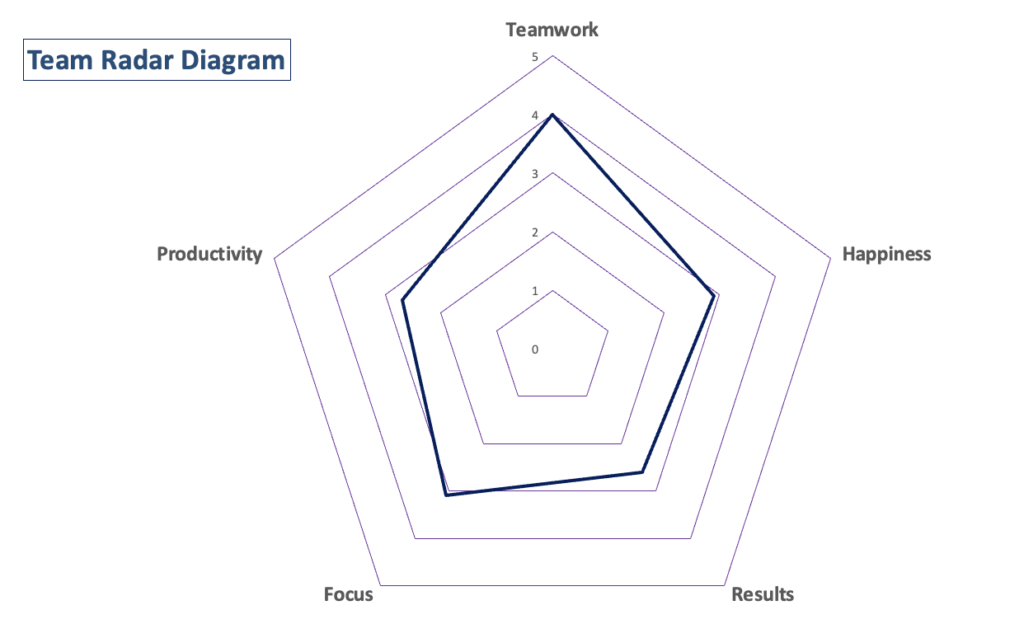
If you want to take this one step further, try a team health check. You can read about this in our other blog post about continuous improvement techniques.
9 – Timeline Retrospective
The Timeline Retro is fantastic when you’ve had a busy sprint, a long release cycle, or multiple events happening at once. It helps the team see the sequence of events visually and remember things they may have forgotten or minimised.
- Draw a timeline across the sprint or release
- Add events, blockers, incidents, or successes
- Annotate with emotions, insights, and reflections
Mapping emotions and events over time helps identify patterns like recurring blockers, stress peaks, or big wins the team should celebrate. It’s also good for onboarding new team members quickly because it gives them historical context.
10 – Dixit Retro
Lastly, one of my favourites – the Dixit Retrospective! Dixit is a game and the visual and sometimes weird or wonderful cards introduce playfulness, creativity, and emotional depth into the retrospective.
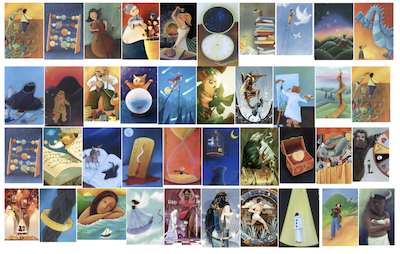
Dixit retros are useful when you want to bring out feelings and perspectives that might not come out in a more traditional format.
- Each person selects an image that reflects their experience of the sprint
- Teammates guess what the image might represent
- The person shares the meaning behind their card
It’s light-hearted, and the visual metaphor makes it easier for people to express themselves honestly.
As it allows people to choose images rather than words, they often express things they may not have shared directly.
This format lowers the pressure, helps people open up, and creates stronger personal connections within the team. It’s especially useful after a stressful sprint, during periods of change, or when a team needs an energy boost.
If you want to go deeper into how to run retrospectives that actually help teams improve, click here to access our free Udemy course that walks you through the essentials step by step. It covers everything from setting up your first retro to choosing the right format, encouraging participation and facilitating conversations.
Subscribe to our newsletter below for free and receive a monthly product and delivery deep dive.
10 Retrospective Formats To keep your team engaged and help them improve If you’ve been running retrospectives for a while, you’ll know …
What is a Future Reality Tree? Suzanne Morrison In this post, we will explain what a Future Reality Tree is and how …
The Essential Guide to Continuous Improvement – Part 1 This is not your Average Continuous Improvement Guide Welcome to the second instalment …
Struggling with Meeting Engagement? Use PODS We were in the middle of a high-pressure project. One that everyone across the business was …


